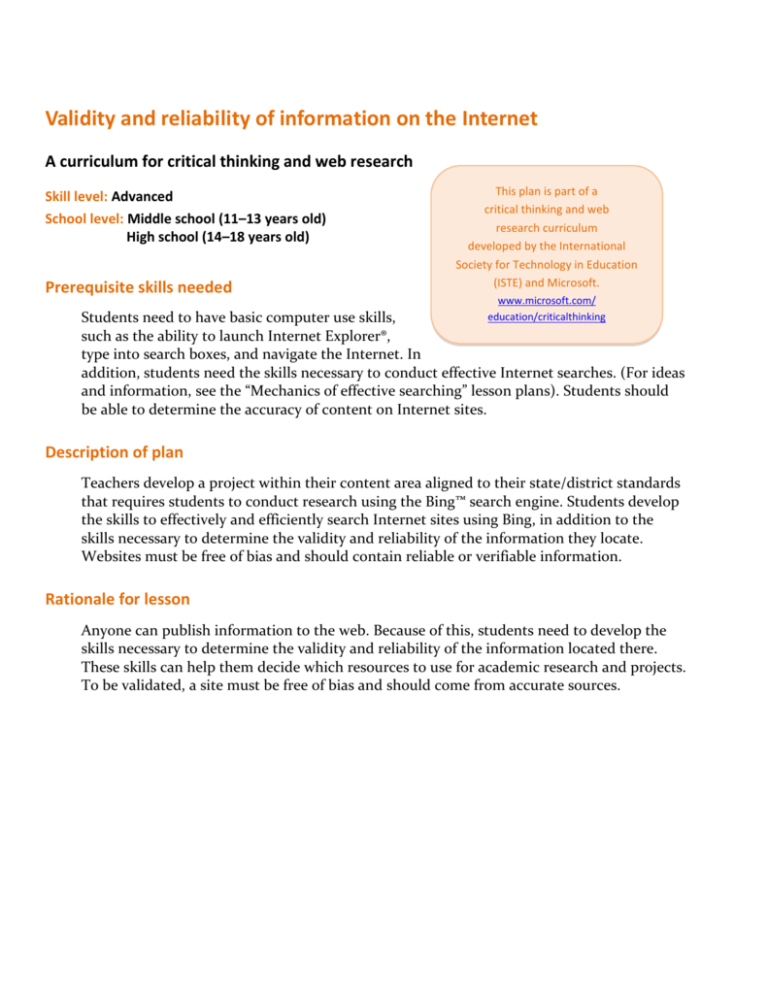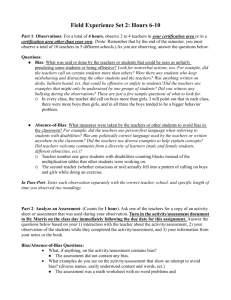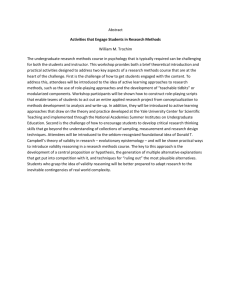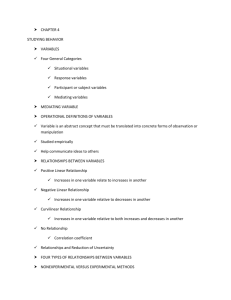
Validity and reliability of information on the Internet
A curriculum for critical thinking and web research
Skill level: Advanced
School level: Middle school (11–13 years old)
High school (14–18 years old)
Prerequisite skills needed
This plan is part of a
critical thinking and web
research curriculum
developed by the International
Society for Technology in Education
(ISTE) and Microsoft.
www.microsoft.com/
education/criticalthinking
Students need to have basic computer use skills,
such as the ability to launch Internet Explorer®,
type into search boxes, and navigate the Internet. In
addition, students need the skills necessary to conduct effective Internet searches. (For ideas
and information, see the “Mechanics of effective searching” lesson plans). Students should
be able to determine the accuracy of content on Internet sites.
Description of plan
Teachers develop a project within their content area aligned to their state/district standards
that requires students to conduct research using the Bing™ search engine. Students develop
the skills to effectively and efficiently search Internet sites using Bing, in addition to the
skills necessary to determine the validity and reliability of the information they locate.
Websites must be free of bias and should contain reliable or verifiable information.
Rationale for lesson
Anyone can publish information to the web. Because of this, students need to develop the
skills necessary to determine the validity and reliability of the information located there.
These skills can help them decide which resources to use for academic research and projects.
To be validated, a site must be free of bias and should come from accurate sources.
Essential concepts / questions
Essential questions for teachers:
How can I ensure that my students are able to determine the validity and reliability of
information found on the Internet?
How can I ensure that my students are able to determine whether the information on
Internet sites is biased?
How can I ensure that my students are able to identify the reliability of resources
used by the author of Internet sites?
Essential questions for students:
How can I determine whether information located on the Internet is biased?
How can I determine the reliability of resources used by Internet site authors?
National Educational Technology Standards (NETS)
NETS-T
4A: Advocate, model, and teach safe, legal, and ethical use of digital information and
technology, including respect for copyright, intellectual property, and the appropriate
documentation of sources.
NETS-S
3B: Locate, organize, analyze, evaluate, synthesize, and ethically use information from
a variety of sources and media.
Teacher preparation
Teachers should familiarize themselves with the Bing (http://www.bing.com) search
engine.
Teachers should work with the lab coordinator or media specialist to determine lab
logistics, level of access per student, and seating arrangements.
Teachers need to develop clear criteria for the project, including guiding questions to
be addressed by students’ research, and a project scoring rubric, including criteria for
use of technology (for example, the number of resources and images required, or how
to cite sources).
See the “Citing web sources” lesson plans for ideas.
If students are working in cooperative groups, teachers should develop specific roles
and responsibilities that provide for individual and group accountability.
Teachers should have experience applying the questions in “Validity - Student
handout 1: Questions to identify validity and reliability of Internet sites” to their own
Internet searches.
Management issues
Teachers must consider student arrangement in labs; if students are to locate media files,
where those files will be stored; and how much time will be allotted. Teachers should
determine where students will store their work (possibilities include folders on the school
server or on Windows Live™ SkyDrive™). To reduce off-task behavior, teachers should
develop criteria to guide students’ searches.
Instruction
Teachers should demonstrate how to determine the validity and reliability of Internet sites.
Do this by using the bias and resource questions in “Validity - Student handout 1: Questions
to identify validity and reliability of Internet sites” as a guide.
Teachers should demonstrate for students how to complete “Validity – Student
worksheet 3: Bias and sources.”
Student activities / guidance
Students conduct searches based on the assigned topic or guiding questions. As they locate
sites related to their topic, they refer to the bias and resource questions in “Validity Student handout 1: Questions to identify validity and reliability of Internet sites.” As guided
practice, students record sites used and they log information concerning the bias of Internet
sites and reliability of resources, as discussed in “Validity – Student worksheet 3: Bias and
sources.”
Assessment
Completed worksheet: “Validity – Student worksheet 3: Bias and sources.”
Students reflect on their own searches and answer the essential questions:
How can I determine if information located on the Internet is biased?
How can I determine the reliability of resources used by Internet site authors?
Related resources and tutorials
Bing User Guide: How to use Bing
http://www.nirmaltv.com/2009/06/01/bing-detailed-user-guide
Information about the Bing search engine
http://help.live.com/help.aspx?project=wl_searchv1&market=enUS&querytype=keyword&query=egapemoh&domain=www.bing.com:80
Windows Live SkyDrive
http://skydrive.live.com/
“Validity – Student worksheet 4: Wikipedia student worksheet” and “Validity –
Teacher demo – Wikipedia: Wikipedia overview”
See the “Mechanics of effective searching” lesson plans for ideas and guidelines.
See the “Citing web sources” lesson plans for ideas and guidelines.
Closure and reflection
Questions for closure and student reflection when reviewing student activity and learning:
How can you determine the reliability of sources used by authors of Internet sites?
What are some questions you can ask yourself to determine if information located on
the Internet is biased?
Why is it important to identify the reliability of sources used by the author of an
Internet site?
Why is it important to determine if information on an Internet site is biased?
Teacher reflection questions
Were there any unforeseen management issues?
Which elements of the lesson were effective?
Which elements of the lesson should be adjusted for next time?
Will students be able to complete this type of lesson more independently next time?
What obstacles did students encounter in answering the questions related to bias and
resources used by Internet sites?
Supplementary materials
“Validity - Student handout 1: Questions to identify validity and reliability of
Internet sites”
“Validity – Student worksheet 3: Bias and sources”
Visit us on the web at www.microsoft.com/education/criticalthinking.
Microsoft, Bing, Internet Explorer, SkyDrive, and Windows Live are trademarks of the Microsoft group of companies.
The names of actual companies and products mentioned herein may be the trademarks of their respective owners.
© 2010 Microsoft Corporation. All rights reserved.










